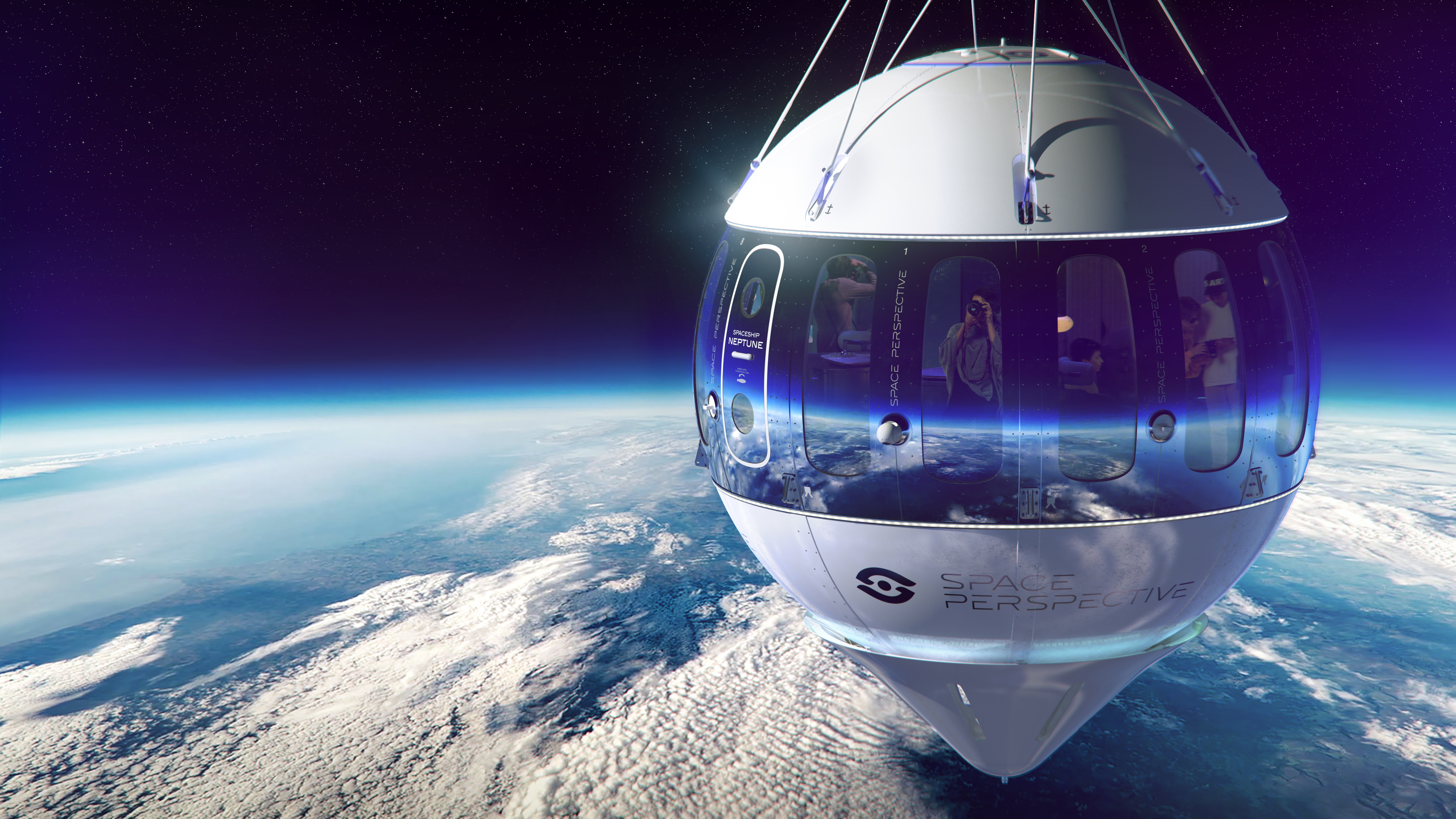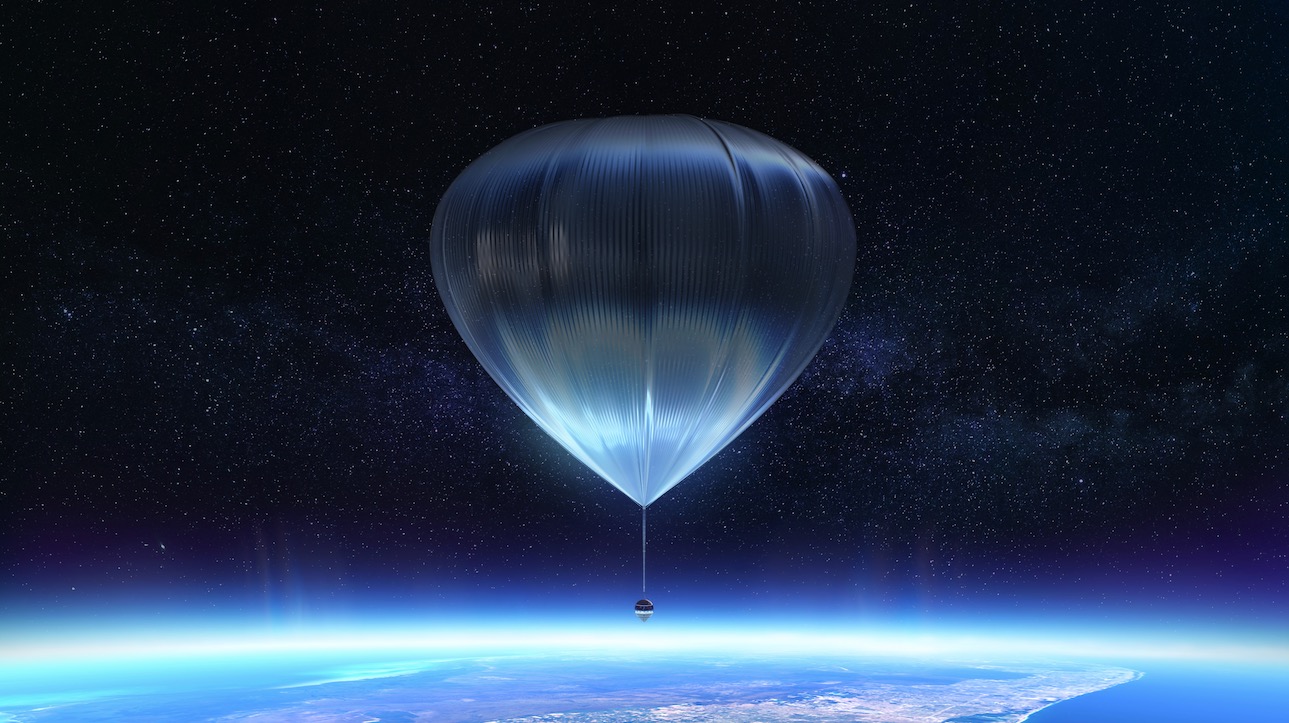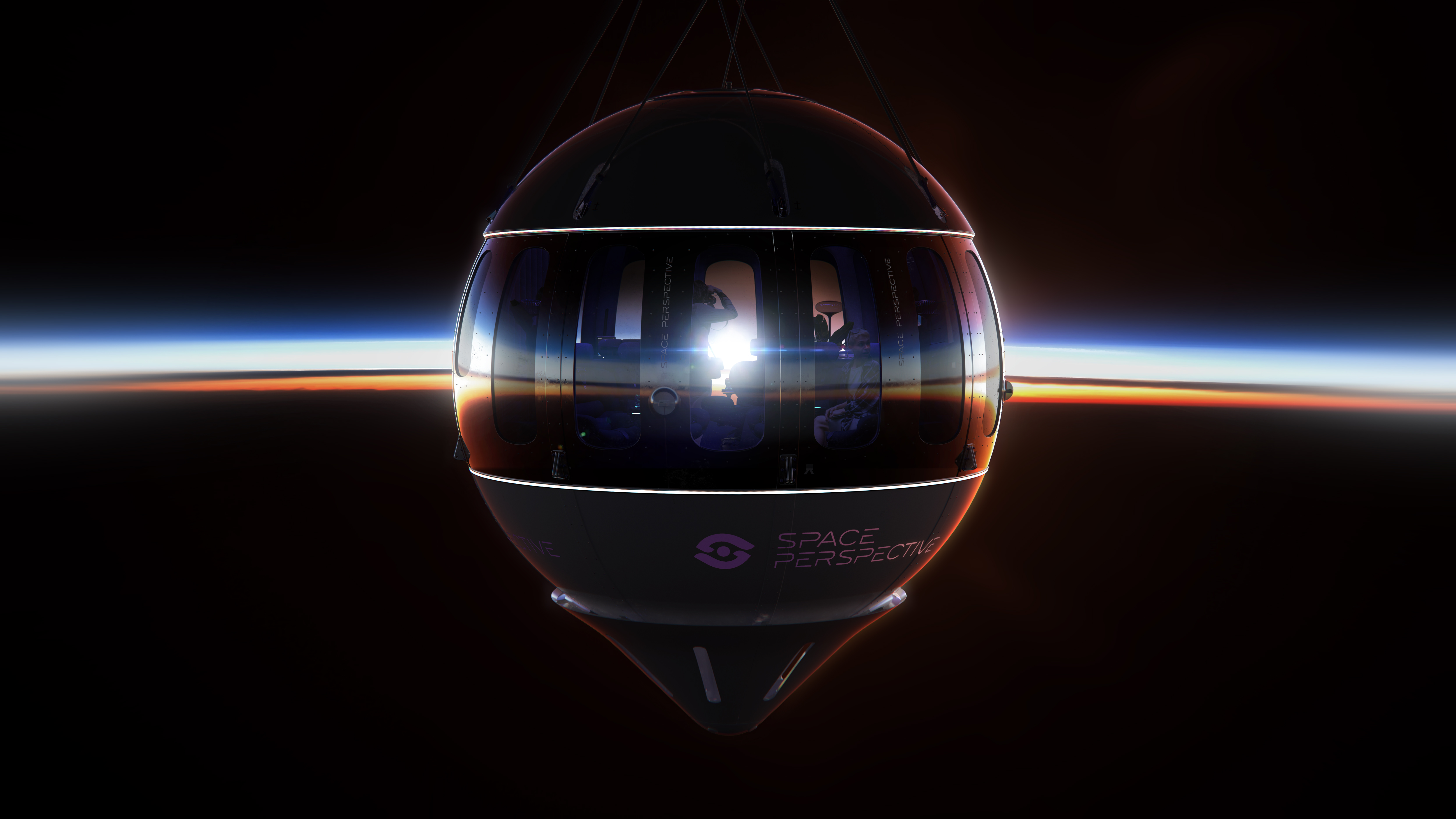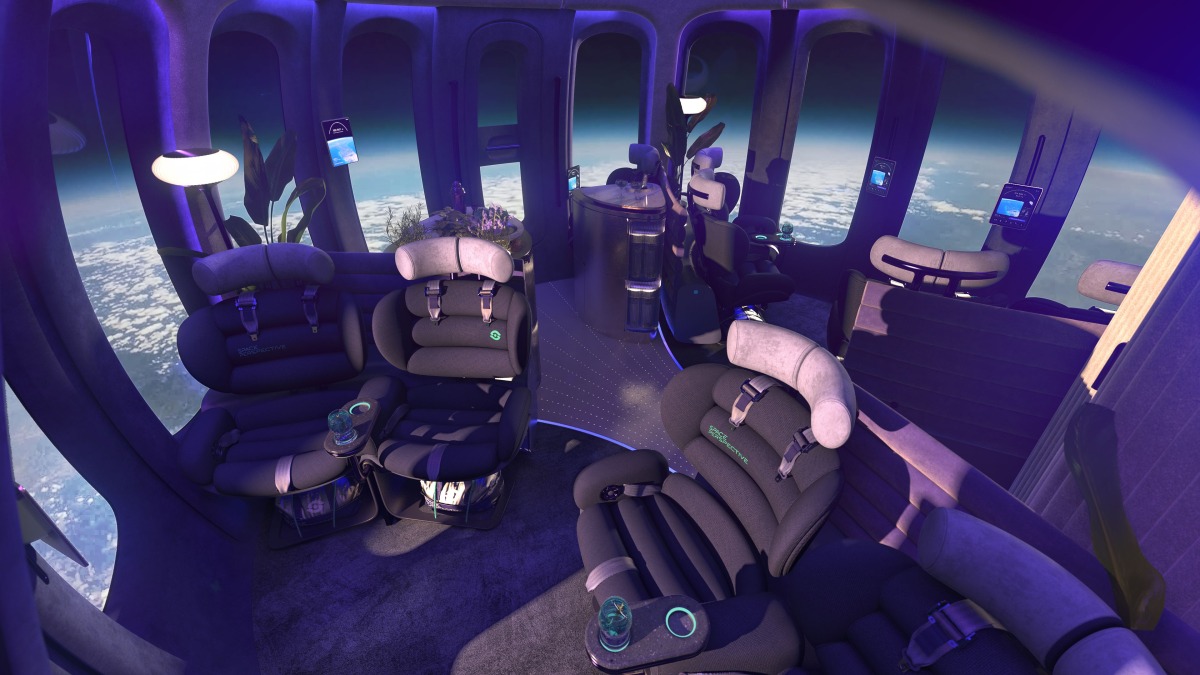
Space Perspective's balloon-borne capsule won't have the gumdrop shape we typically associate with that aerospace term.
The Florida-based company today (July 27) unveiled the exterior design of its pressurized capsule, which will begin carrying customers to the stratosphere beneath a giant balloon just two years from now, if all goes according to plan. The craft, known as Spaceship Neptune, will be spherical, it turns out.
A spherical shape maximizes the panoramic views afforded by the capsule's windows, which will be the largest ever to fly so high, company representatives said. Spaceship Neptune will also sport a proprietary "splash cone" at its base, which is designed to make its ocean landings softer and safer.
Related: The first space tourists in photos

"The team has come together to create an amazingly robust, safe and incredibly elegant and luxurious system for Spaceship Neptune," Taber MacCallum, Space Perspective's co-founder, co-CEO and chief technical officer, said in a statement today. "Simplicity and automation are the keys to safety."
Today's reveal comes three months after Space Perspective showed off what the capsule will look like on the inside. Spaceship Neptune's cabin will feature a restroom with a view and a "Space Lounge" with a telescope and interactive screens, among other amenities.

Space Perspective has begun building the capsule at the Shuttle Landing Facility, at NASA's Kennedy Space Center in Florida. Commercial flights of Spaceship Neptune, which can carry nine people — eight passengers and a pilot — are expected to begin in late 2024, company representatives said.
Get the Space.com Newsletter
Breaking space news, the latest updates on rocket launches, skywatching events and more!
Those flights will last about six hours from liftoff to splashdown. They'll take passengers on a gentle ride to a maximum altitude of about 100,000 feet (30,000 meters), allowing a view of our thin atmosphere against the blackness of space. Spaceship Neptune won't actually reach space, and passengers won't experience weightlessness.

A seat aboard the capsule currently sells for $125,000, and nearly 900 people have bought a ticket to date, Space Perspective representatives said.
The company has a competitor in the stratospheric tourism market — Arizona-based World View, which plans to offer a similar experience for $50,000 per seat.
Those balloon jaunts will be quite different than the rocket rides provided by suborbital tourism companies Virgin Galactic and Blue Origin, whose vehicles reach space briefly. Virgin Galactic currently charges $450,000 per seat for a ride on its SpaceShipTwo space plane; Blue Origin has not divulged ticket prices for its New Shepard vehicle.
Mike Wall is the author of "Out There" (Grand Central Publishing, 2018; illustrated by Karl Tate), a book about the search for alien life. Follow him on Twitter @michaeldwall. Follow us on Twitter @Spacedotcom or on Facebook.
Join our Space Forums to keep talking space on the latest missions, night sky and more! And if you have a news tip, correction or comment, let us know at: community@space.com.

Michael Wall is a Senior Space Writer with Space.com and joined the team in 2010. He primarily covers exoplanets, spaceflight and military space, but has been known to dabble in the space art beat. His book about the search for alien life, "Out There," was published on Nov. 13, 2018. Before becoming a science writer, Michael worked as a herpetologist and wildlife biologist. He has a Ph.D. in evolutionary biology from the University of Sydney, Australia, a bachelor's degree from the University of Arizona, and a graduate certificate in science writing from the University of California, Santa Cruz. To find out what his latest project is, you can follow Michael on Twitter.









